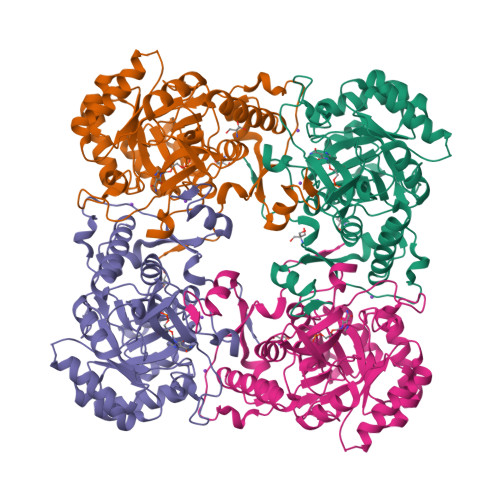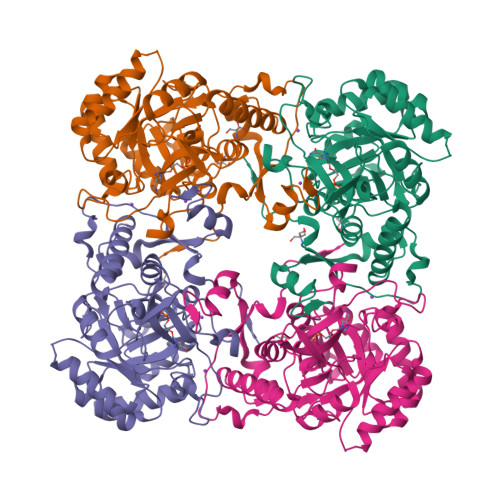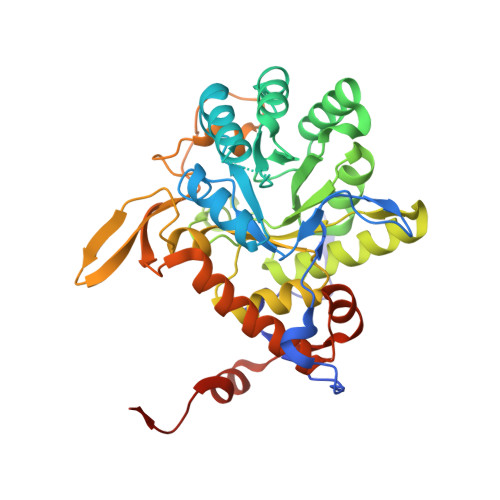The Immunosuppressive Agent Mizoribine Monophosphate Forms a Transition State Analogue Complex with Inosine Monophosphate Dehydrogenase
Gan, L., Seyedsayamdost, M., Shuto, S., Matsuda, A., Petsko, G.A., Hedstrom, L.(2003) Biochemistry 42: 857-863
- PubMed: 12549902
- DOI: https://doi.org/10.1021/bi0271401
- Primary Citation of Related Structures:
1PVN - PubMed Abstract:
Mizoribine monophosphate (MZP) is the active metabolite of the immunosuppressive agent mizoribine and a potent inhibitor of IMP dehydrogenase (IMPDH). This enzyme catalyzes the oxidation of IMP to XMP with the concomitant reduction of NAD via a covalent intermediate at Cys319 (E-XMP). Surprisingly, mutational analysis indicates that MZP is a transition state analogue although its structure does not resemble that of the expected transition state. Here we report the X-ray crystal structure of the E.MZP complex at 2.0 A resolution that reveals a transition state-like structure and solves the mechanistic puzzle of the IMPDH reaction. The protein assumes a new conformation where a flap folds into the NAD site and MZP, Cys319, and a water molecule are arranged in a geometry resembling the transition state. The water appears to be activated by interactions with a conserved Arg418-Tyr419 dyad. Mutagenesis experiments confirm that this new closed conformation is required for the hydrolysis of E-XMP, but not for the reduction of NAD. The closed conformation provides a structural explanation for the differences in drug selectivity and catalytic efficiency of IMPDH isozymes.
Organizational Affiliation:
Department of Biochemistry and Chemistry and the Rosenstiel Basic Medical Sciences Research Center, Brandeis University, Waltham, Massachusetts 02454, USA.



















